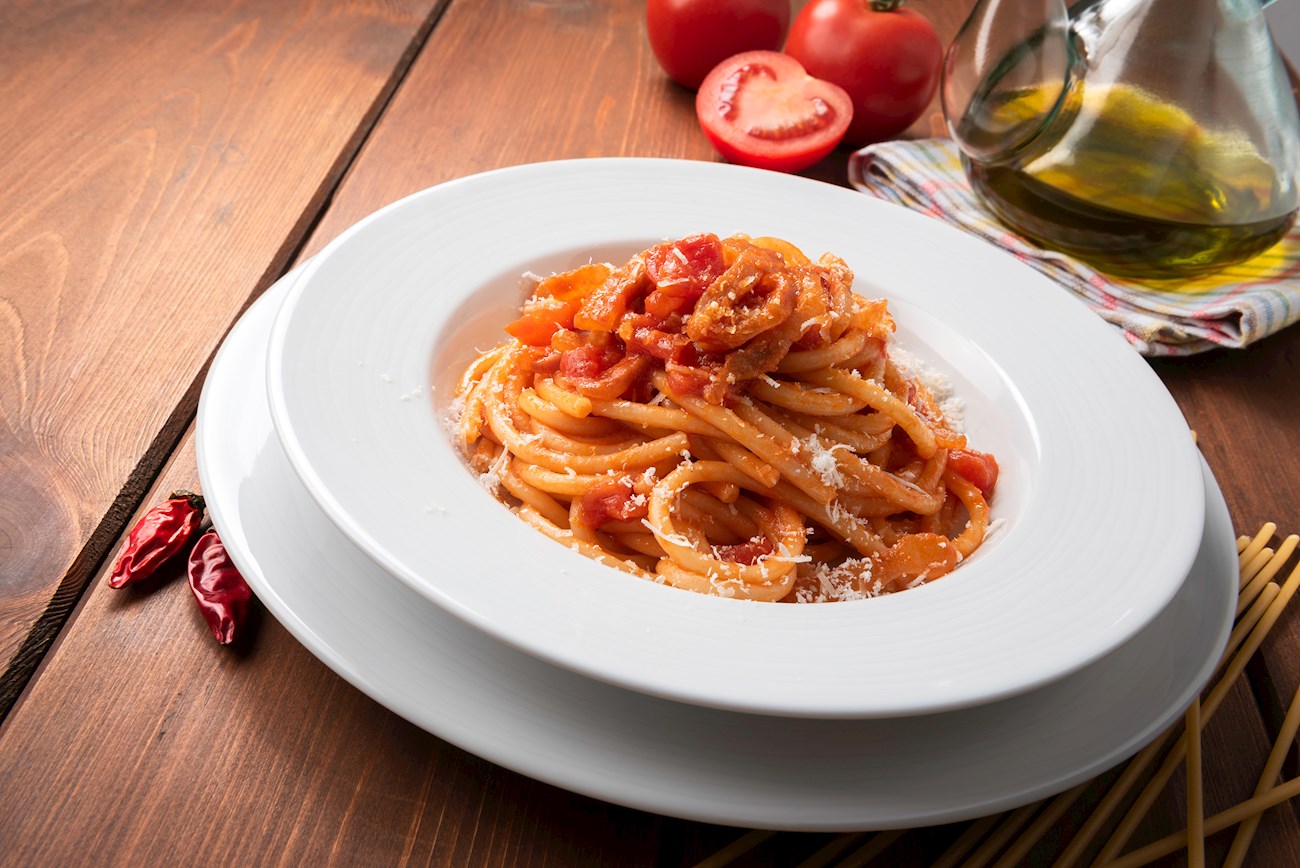Amatriciana
(Bucatini Amatriciana, Spaghetti Amatriciana, Rigatoni Amatriciana, Sugo all'Amatriciana, Amatriciana Sauce)
Named after Amatrice, a provincial town in the Sabine Hills northeast of Rome; the iconic Amatriciana sauce is often considered a part of the "holy trinity of Roman pasta", together with carbonara and cacio e pepe. Amatriciana was invented in the 17th century by adding tomatoes to the already famous gricia sauce – diced tomatoes are sautéed in fat rendered from juicy bits of guanciale (cured pork jowl), then tossed together with grated pecorino cheese and either spaghetti or bucatini pasta.
The first recipe for Amatriciana was published in the 1790 cookbook L’Apicio Moderno by Francesco Leonardi, a renowned Roman chef and author. Over time, this classic Italian dish became so popular it was featured in several movies, from Alberto Sordi’s 1954 film An American in Rome and Luciano Salce’s 1978 Where Are You Going on Holiday? to Ryan Murphy’s Eat Pray Love, in which Julia Roberts joyfully wolfs down a portion of spaghetti all’Amatriciana while sitting on the terrace of a typical Roman osteria.
With delicate heat from pepperoncino peppers, the sweetness and tartness from the tomato-based sauce, the sharpness of pecorino, and the fatty richness of guanciale, Amatriciana is best enjoyed with medium-bodied, smooth Italian reds such as Montepulciano d’Abruzzo and Sangiovese.












